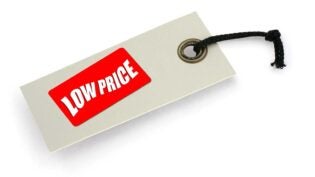
There are thousands of posts and hundreds of books on Value Creation. I’ve, in fact, written 285 since starting this blog and dozens of others at other sites.
The themes in all of this stuff usually follow a similar line of thinking:
- Customers define value in their own terms.
- Sellers have to create value aligned with what the customer thinks is important.
- To win, we have to create more value than anyone else.
From there, things start getting a little fuzzy, because we start wrapping pricing and discounting into the whole concept of value creation.
Theoretically, we justify higher prices by creating greater value. If we want to avoid discounting, we just make sure the customer recognizes the value we create (possibly even acknowledging its importance). The argument, at least theoretically, is that once you create that recognition and you have superior value to the alternatives, the customer will issue you a PO and you avoid discounting.
If the real world were that simple!
Unfortunately, there is a huge dynamic going on around value creation and alignment with what the customer wants and is willing to pay for. And I think this is what we miss in this whole discussion.
Before going further, I’ll tell a story to help illustrate the point. Years ago, I ran a very large sales organization. We were very early adopters of productivity tools for sales, we bought CRM (perhaps before we should have bought it–but that’s another story). And I equipped our 1000 plus sales organization with laptop PCs.
I remember how my team and I were sold. The vendors were very sophisticated, it would be a huge win for any of them. They put their best efforts forth in creating value and aligning with what our team thought was important.
One vendor, they actually had the very best solution, was about 15% higher than the other two alternatives. They did an outstanding job of communicating their value and why it was worth 15% more. But, while much of what they communicated was important, in the final analysis, there were things we liked, but didn’t need. The sales person defended the pricing by asking, “Don’t you see the value we are creating justifies our price?”
My response, “Absolutely, your value is very well aligned with the price, in fact it’s relative bargain. But we don’t need all that value, can you remove that stuff we don’t care about and drop your price?” What he didn’t understand, was that from my point of view, all that extra value just represented cost to me. It was stuff—value we didn’t need.
He then did what too many people do. He dropped his prices by 10%—didn’t remove any of the value, because he couldn’t. But it did cause me to wonder about his value argument. He might have been able to persuade me, but he kept focusing on all the value he created, including all that stuff we didn’t care about. Yes, it was a better deal than before, but the more he focused value elements I didn’t care about, the more I didn’t want to do business with him.
Related Article: A Tale of Two Pricing Strategies
Ultimately, we bought from another supplier—one of the two remaining, because that vendor offered value aligned with our needs at a price we were willing to pay. His value was superior to the third vendor’s price, really, we felt better about doing business with him, versus the third vendor. Even though his price was higher, but still within the range that we were willing to pay.
It’s this complex dynamic that many of us miss as we start looking at value, pricing, cost, and the customer’s willingness or ability to pay. However well aligned our price is with the value we create, if it’s more than the customer is willing to pay, then all that value represents cost. It’s a burden or a boat anchor that drags you down.
But, here’s where it gets more complex. We can change the customer’s mind about what they are willing to pay—we may not be able to change what they are able to pay. Very often, our strategy is to try to get them to change their minds about their willingness to pay. It’s very powerful, as long as that willingness to pay more is aligned with their ability to pay more.
The other day, I was talking to another consultant. He was trying to do a deal with a very early stage, exciting technology company. The CEO had a very high willingness to pay for the services the consultant was offering. He didn’t have the ability to do so. As we examined the company’s funding levels, where the funds were committed (e.g. salaries, offices, other services), as much as they wanted, needed and valued the consultant’s services at the price he offered, they just didn’t have the ability to pay.
Often, it’s very hard to understand this dynamic. The customer may not even understand the dynamic between value creation, pricing, willingness to pay and ability to pay. It’s continually shifting and often difficult to articulate from the customer’s point of view.
It’s at this fragile intersection of these elements that great sales people play. Does the customer want all the value you create, are they compelled to have it and willing to pay the price you demand? If they are, do they have the ability to pay more for that value?
As we think about Value Creation, Pricing, Discounting, Willingness To Pay, Ability To Pay, perhaps we have to revise the rules I outlined above:
- Customers define value in their own terms.
- Sellers have to create value aligned with what the customer thinks is important.
- The customer must have a willingness to pay for the value we create.
- The customer must have an ability to pay for what we charge.
- Sometimes it’s tough to tell the difference between 3 and 4, you need to dig deep.
- To win, we have to create more value than anyone else at the price they are willing and able to pay for. The corollary to this, is if the customer sees no differentiation, low price always wins.
- What we consider value, may just represent unnecessary cost to the customer. Don’t sell it as value if they don’t care and you can’t change their point of view. The corollary is, more value is not good value if the customer doesn’t care.
Playing at the intersection of willingness to pay, ability to pay, and sufficient differentiated value is where sales mastery lies.












